GoMim vs Mathos AI: Find the Right AI-Powered Math Solver for You
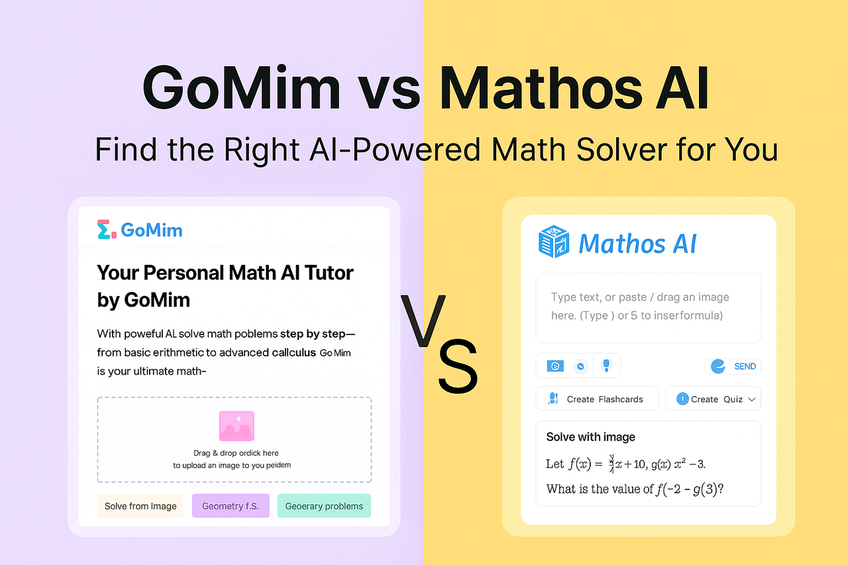
Artificial intelligence is transforming the way students approach mathematics. From algebra to calculus, learners now have powerful AI math solvers at their fingertips. Two names frequently come up in this space: GoMim and Mathos AI. While both tools aim to simplify problem-solving, their approaches differ significantly. GoMim focuses on combining accurate calculations with conceptual understanding, while Mathos AI emphasizes interactive learning through multimedia explanations. This article compares the two, highlighting their unique strengths and helping you decide which tool best fits your study needs.
Core Features of GoMim
GoMim is designed for students who want a combination of problem-solving precision and conceptual understanding.
- Step-by-Step Explanations with Interactive Learning
Every problem comes with a clear, structured breakdown. Users can not only view the reasoning but also click through each step at their own pace, reinforcing problem-solving skills.
- Built-in Calculator with Concept Library
GoMim integrates a calculator that goes beyond computation. Students can select mathematical concepts—like integrals, polynomials, or probability—and access dedicated explanations and examples. This makes it both a solver and a study tool.
- OCR + NLP Fusion
Its advanced engine combines Optical Character Recognition with Natural Language Processing to understand symbols, equations, and even word problems accurately.
- Cross-Device Compatibility
GoMim works seamlessly on desktop, tablet, or mobile, allowing progress to carry across devices for flexible studying.
- Global and Multilingual Support
With support for multiple languages and notations, GoMim is designed for students worldwide, offering an intuitive chat-like interface that makes asking follow-up questions easy.
Core Features of Mathos AI
Mathos AI appeals strongly to students who prefer immersive, visual, and adaptive learning.
- Adaptive Learning with Curriculum Alignment
Mathos AI adjusts to student needs and emphasizes curriculum-based guidance. It provides real-time feedback and bite-sized lessons based on problem-solving patterns.
- Interactive Whiteboard and Video Tutorials
Students can sketch, annotate, or explore guided video explanations. This is especially helpful for visual learners who want to see problem-solving demonstrated step by step.
- Multi-Modal Input and Specialized Tools
Mathos AI supports typing, voice, handwriting, and image uploads. It also integrates a graphing calculator (Desmos-powered), specialized calculators (for integrals, polynomials, etc.), and a PDF annotator for study material.
- Cross-Device Synchronization
Designed mobile-first, Mathos AI also ensures progress syncs across laptops and tablets, providing continuity of learning across devices.
Core Approach to Math Learning
GoMim and Mathos AI share the same goal: helping students understand math better. However, their learning approaches differ.
- GoMim provides AI-powered step-by-step written explanations for each problem. Its solver adapts dynamically between symbolic and numerical methods, and students can even study through each step interactively, almost like navigating with a tutor.
- Mathos AI, on the other hand, emphasizes adaptive learning through video-based explanations, real-time feedback, and interactive whiteboards. This approach is tailored to visual and hands-on learners.
Problem-Solving in Practice
While both GoMim and Mathos AI can arrive at the correct solutions, the way they present their steps reflects their core teaching philosophies.
Taking a simple calculus question as an example, "Find the derivative of x² + 3x "
- GoMim emphasizes a step-by-step breakdown. In the example, the system clearly explains the applied rules (such as the power rule and the sum rule) and unfolds the process one step at a time. This structured approach is especially suitable for students who prefer to understand concepts through logical reasoning. If difficulties arise, users can consult concept articles on the Calculator page or ask questions directly in the chatbox to reinforce their understanding.
Mathos AI, on the other hand, focuses on an interactive and multimodal experience. For the same problem, it provides a written step-by-step solution while also displaying a graph of the function on the right-hand side, helping students connect algebraic results with geometric intuition. Additionally, it offers features like creating quizzes or video explanations, though "similar questions" and "related videos" are not guaranteed for every problem. This makes the learning experience flexible but sometimes less consistent.
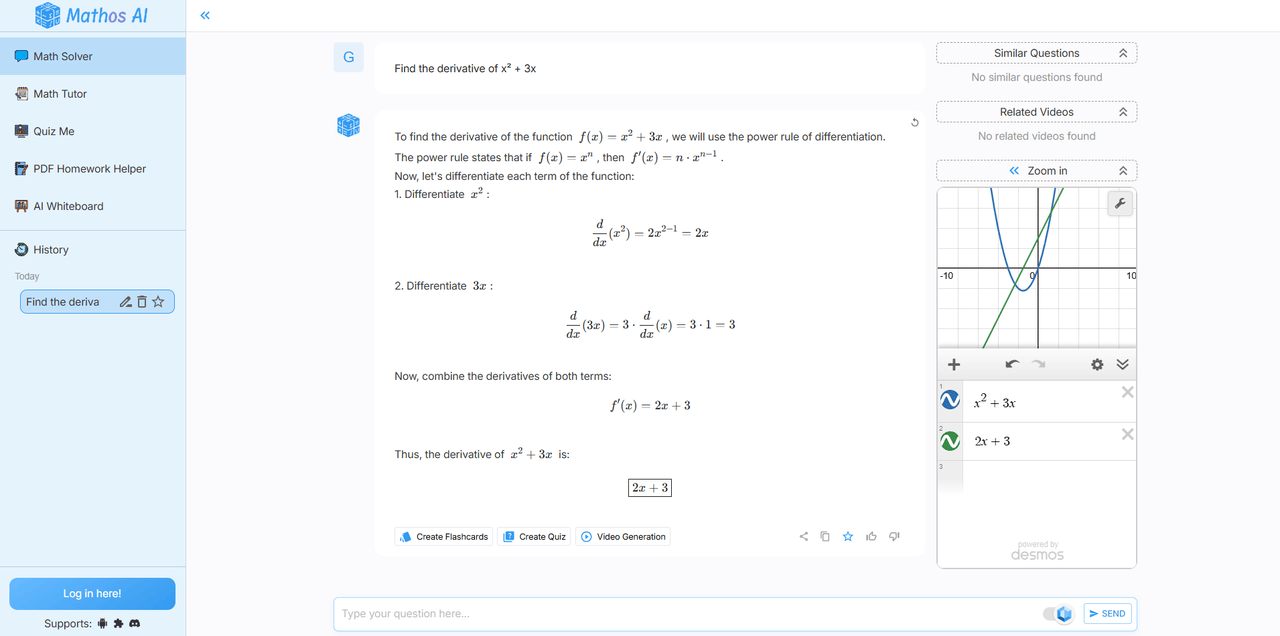
Best fit for different learning needs:
If you value systematic, logically clear explanations and want to build a strong conceptual foundation, GoMim is generally the more effective choice.
If you prefer highly visual, interactive approaches to quickly grasp ideas and enjoy practicing through quizzes or videos, Mathos AI can also be a helpful option.
By choosing between text-based clarity or multimedia-driven interactivity, students can align the platform with their learning style.
Learning Style and Explanations
GoMim: Conceptual Depth
GoMim ensures students move from getting an answer to understanding the "why." When you're using the calculator—say on a trigonometry problem—and you're unsure about the definitions or underlying logic, you have two learning paths:
1、Ask directly in the chat to get an on-demand explanation tailored to your question;
2、Open the calculator's built-in concept articles, where you can browse clear write-ups on topics like sine, cosine, and tangent with examples and common pitfalls.
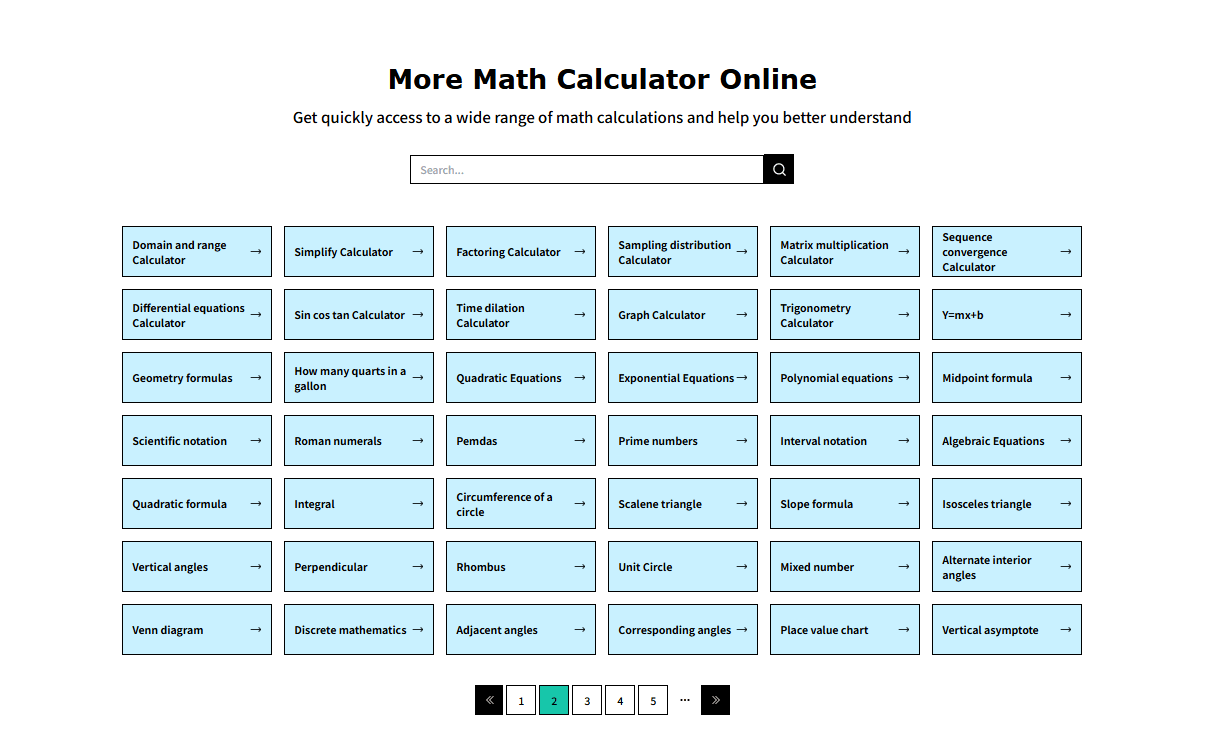
If anything still isn't clear after reading, you can return to the chat to ask follow-up questions, and GoMim will connect the core principles back to your specific problem and show how the concepts are applied step by step.
Mathos AI: Visual Engagement
Mathos AI enhances problem-solving by offering clear video explanations and interactive demonstrations. Beyond static text, it provides step-by-step breakdowns in a visual format, helping students who benefit from seeing problems solved in real time. With features like dynamic illustrations and guided walk throughs, Mathos AI makes abstract concepts easier to grasp and remember.
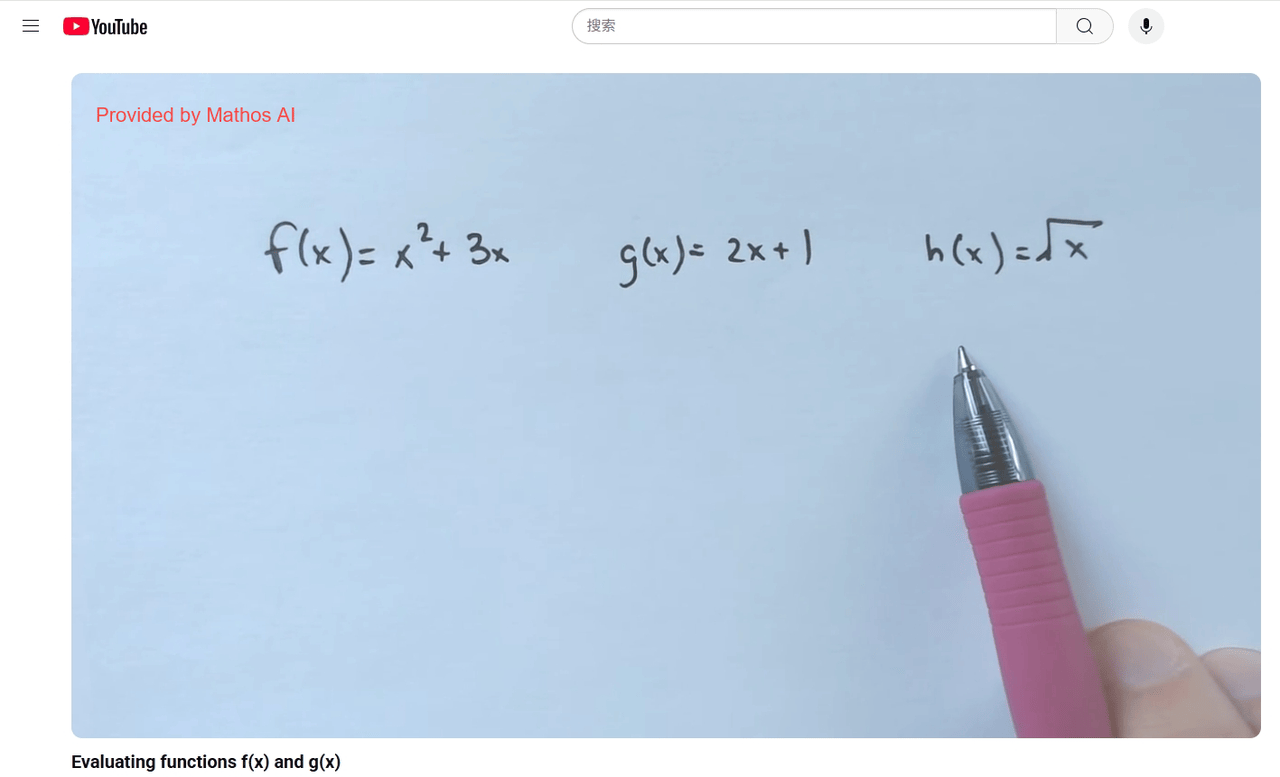
By comparing the two, it becomes clear that GoMim emphasizes comprehensive academic support across all levels and subjects, while Mathos AI places its strength in interactive and visually engaging learning experiences.
User Experience and Accessibility
Both GoMim and Mathos AI are designed with accessibility in mind, but their interfaces highlight different priorities.
- GoMim: The homepage is structured with clear entry points such as Calculator, Solver, Homework, and Conversation, making it straightforward for students to navigate directly to the tool they need. The layout emphasizes problem-solving examples (e.g., geometry, text-based, and word problems), which lowers the barrier for first-time users. Its clean, grid-style design resembles a dedicated study environment, and the step-by-step solver enhances the feeling of working with a personal tutor.
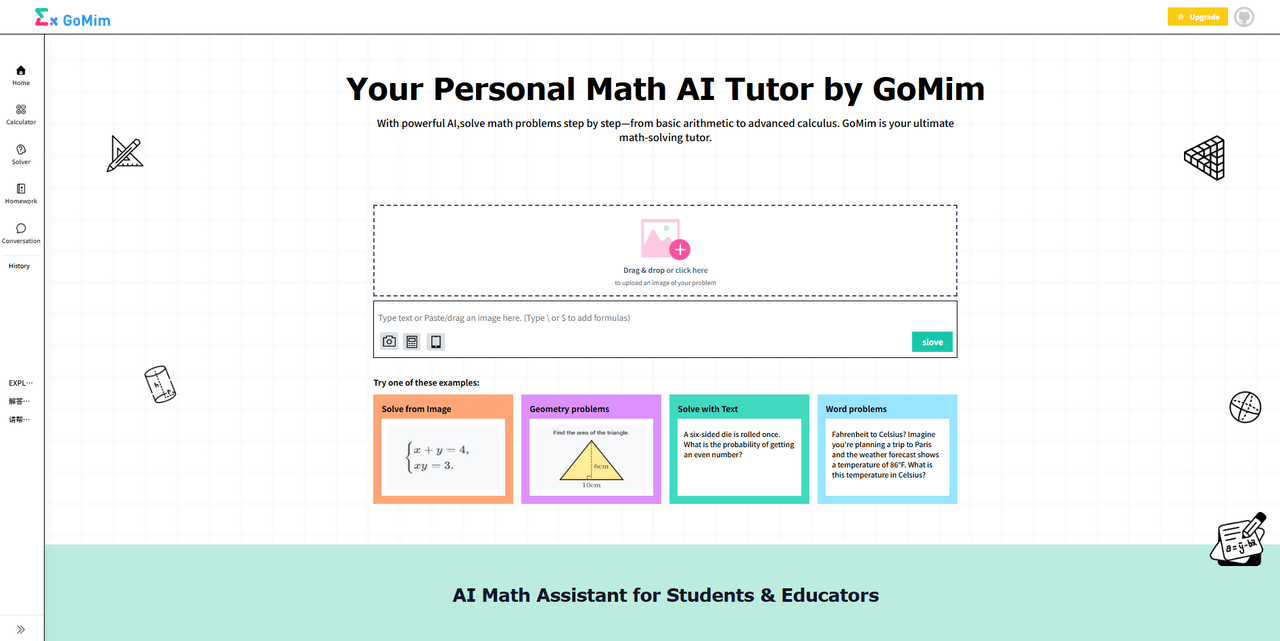
- Mathos AI: The interface places greater emphasis on add-on features like Flashcards, Quiz Creation, and Video Generation, highlighting its goal of providing a more interactive and multimedia-driven learning experience. However, its design can feel slightly busier, with multiple options competing for attention on the main screen. While this offers flexibility, students looking for quick, straightforward problem-solving may find the extra features less immediately useful.
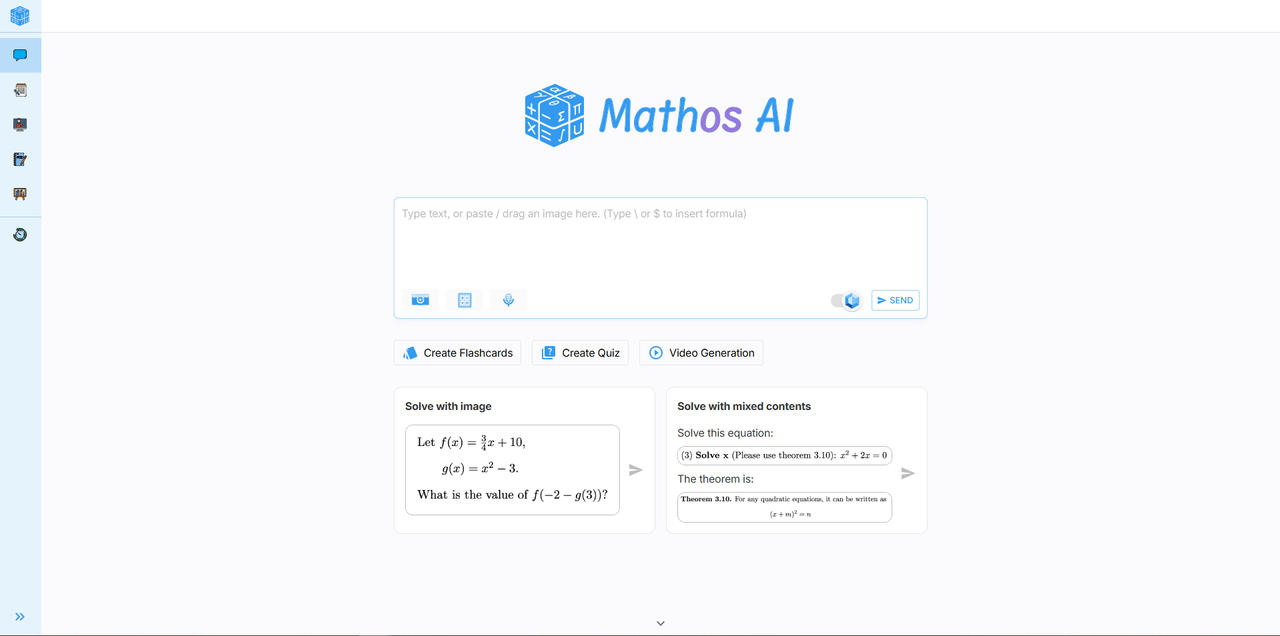
In practice, GoMim is better suited for learners who prioritize clarity, structure, and efficient problem-solving, while Mathos AI appeals to those who enjoy exploring supplementary tools and multimedia explanations alongside core math practice.
Coverage Across Subjects
Both AI tools support a wide range of topics, but their focus varies.
- GoMim: Covers mathematics extensively, from basic arithmetic to advanced university-level subjects. Its built-in database and calculator make it suitable for deep dives into mathematical concepts.
- Mathos AI: Provides broader subject coverage, including science topics, but its depth in pure mathematics is often supplemented through visual aids rather than extended explanations.
For students aiming to master mathematics specifically, GoMim provides stronger conceptual coverage. For multidisciplinary learners, Mathos AI's versatility may be appealing.
Cost, Access, and Value
Price and accessibility also play roles in deciding between the two.
- GoMim: Free daily use with optional upgrades. Students can rely on it consistently without worrying about access limitations.
- Mathos AI: Offers free features but requires subscription for extended use, particularly for video-based content.
The choice depends on whether a student values long-term free access (GoMim) or richer multimedia experiences behind a paywall (Mathos AI).
GoMim vs Mathos AI: Direct Comparison
- Explanations: GoMim delivers step-by-step, interactive text guides; Mathos AI offers guided video explanations.
- Calculator Function: GoMim combines complex calculations with a concept-explaining library; Mathos AI focuses on graphing and specialized calculators.
- Learning Depth: GoMim emphasizes conceptual understanding through written logic and formula integration; Mathos AI focuses on adaptive multimedia learning.
- Platform Strengths: GoMim balances mobile and desktop equally, you can use Gomim anytime, on any devices; Mathos AI prioritizes mobile-first use with strong cross-device sync.
- User Style: GoMim works best for analytical readers and self-paced learners; Mathos AI suits visual, hands-on, and curriculum-aligned learners.
Which is Better? GoMim or Mathos AI?
Both GoMim and Mathos AI empower students to tackle math challenges, but they represent two distinct philosophies of learning. GoMim shines as a structured, concept-first companion that blends accurate step-by-step solving with accessible explanations and built-in concept resources. It feels like working alongside a tutor who not only shows the how but also the why. Mathos AI, by contrast, thrives on interactive and multimedia learning, offering videos, whiteboards, and quizzes that turn problem-solving into a visually engaging process.
Choose Mathos AI if you prefer sketchable whiteboards, quiz creation, and video-based tutorials that help translate abstract math into visual demonstrations. Its multi-modal tools make it especially appealing for hands-on learners who want variety in their study sessions.
Opt for GoMim if you value systematic clarity, a stronger conceptual foundation, and consistency across math topics from algebra to advanced calculus. With features like an integrated calculator, multilingual support, and free daily access, GoMim ensures that students can learn efficiently without barriers.
Ultimately, both tools elevate math learning, but GoMim offers the more comprehensive, scalable approach for students who want to deeply understand math and build confidence step by step.
Conclusion
Artificial intelligence is rapidly reshaping the way students approach mathematics, and both GoMim and Mathos AI represent strong examples of this trend. While Mathos AI delivers flexibility through visual and interactive methods, GoMim sets itself apart with its structured explanations, integrated concept library, and accessible design across devices.
For learners deciding between the two, the choice comes down to study style: Mathos AI suits those who prefer visual aids and interactive extras, while GoMim is the more effective long-term companion for students aiming to master mathematics with depth and clarity.
If building a solid conceptual foundation matters most to you, GoMim is the platform worth trying first. With free access, intuitive tools, and step-by-step tutoring, it's designed not just to solve problems but to help you truly understand them.
Recent Posts
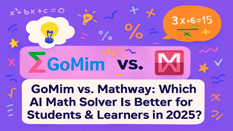
Stuck on a calculus problem at 10 PM? Frustrated by math tools that only give you answers—without explaining how to get ...Try it free now

Artificial intelligence is transforming the way students approach mathematics. From algebra to calculus, learners now ha...Try it free now
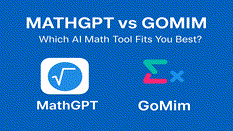
Artificial intelligence has been rapidly changing how students approach learning, and mathematics is one of the subjects...Try it free now
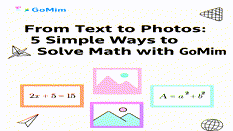
Whether you're new to GoMim or have been using it for a while, you may not have fully explored everything it can do. GoM...Try it free now
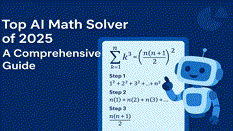
In 2025, the field of mathematics education and problem-solving is being reshaped by the rise of AI math solvers. From s...Try it free now
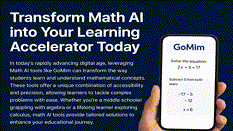
In today's rapidly advancing digital age, leveraging Math AI tools like GoMim can transform the way students learn and u...Try it free now
Table of Contents
Your Personal AI Math Tutor
instant problem-solving, step-by-step explanations, personalized learning paths, and visual aids
AI Math SolverLearn math smarter on GoMim
Try GoMim Free - The Most Advanced AI Math Solver!
Join thousands of students using GoMim for math learning and problem -solving.
